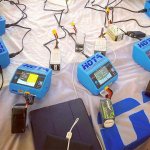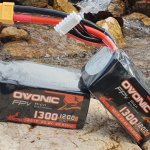How to charge the new battery
It should be noted that when using the lithium battery, the battery will enter the sleep state after being placed for a period of time. At this time, the capacity is lower than the normal value, and the use time is also shortened. But lipo battery is easy to activate, as long as after 3 to 5 normal charge and discharge cycles, the battery can be activated to restore normal capacity. Due to the characteristics of lipo battery, it has almost no memory effect. Therefore, during the activation process of the new lipo battery, no special methods and equipment are needed.

As for the “activation” problem of lithium battery, there are many sayings: the charging time must be more than 12 hours, and it is repeated three times in order to activate the battery. This “the first three charges need to charge more than 12 hours” is obviously a continuation of nickel batteries (such as nickel cadmium and nickel metal hydride). So this argument can be said to have been misinformed from the beginning. The charge and discharge characteristics of lithium batteries and NIMH batteries are very different, and it can be clearly stated that many official technical documents emphasize that overcharge and overdischarge will cause huge damage to lithium batteries, especially liquid lithium ion batteries. Therefore, it is best to charge according to the standard time and standard method, especially not to charge for more than 12 hours (the charger shows full).
In addition, the lipo battery or charger will automatically stop charging after the battery is fully charged, and there is no so-called “trickle” charging that lasts for 10 hours or so for nickel electric chargers. That is to say, if your lipo battery is fully charged, it is also a white charge on the charger. And none of us can guarantee that the characteristics of the battery’s charge and discharge protection circuit will never change and that the quality is foolproof, so your battery will be on the verge of danger for a long time. This is another reason why we are against long charging. In addition, another aspect that cannot be ignored is that the lipo battery is also not suitable for overdischarge, and overdischarge is also very disadvantageous to the lipo battery.
When should charging start in normal use
You can often see this statement, because the number of charge and discharge is limited, so the battery should be recharged as much as possible, in fact, the life of the lipo battery has nothing to do with this. The following is an example of an experimental table on the charge-discharge cycle of a lithium-ion battery. The data on the cycle life is listed as follows:
Cycle life (10% DOD):> 1000 times
Cycle life (100% DOD):> 200 times
DOD is the abbreviation of depth of discharge. It can be seen from the table that the number of chargeable times is related to the depth of discharge. The cycle life at 10% DOD is much longer than that at 100% DOD. Of course, if it is equivalent to the relative total capacity of the actual charge: 10% * 1000 = 100, 100% * 200 = 200, the latter ’s full charge and discharge is still better, but the previous netizen ’s statement needs to be corrected: in normal Under the circumstances, you should reserve the battery according to the principle of recharging the remaining power of the battery, but if your battery is not expected to persist throughout the day on the second day, you should start charging in time. Of course, if you are willing to back It’s another matter to go to the office with the charger.
The principle of recharging the remaining battery power is not to extremes. As long as the long charge is widely circulated
Lithium polymer battery rechargeable lithium polymer battery correct use
In other words, “try to run out of battery power”. This method is actually only used on nickel batteries, the purpose is to avoid the memory effect, unfortunately, it is also circulating on lithium batteries.
Personally suggest that the lipo battery should not be overcharged or used without electricity. The battery will be charged before it runs out, which will not cause damage to the battery. The lipo battery should be fully charged (normal charging time) and discharged one to two times every three to four months.
The long-term unused lipo battery should be stored in a cool and dry place. The storage voltage (3.8v) is the best. It is dangerous to store it at full power and the battery will be damaged. If the battery is stored without electricity, it will be damaged. Every 3–6 months, check if you need to recharge.
Lithium-ion batteries can be divided into liquid lithium-ion batteries and polymer lithium-ion batteries according to the electrolyte. The electrolyte of polymer lithium-ion batteries is colloidal and will not flow, so there is no leakage problem and it is safer.
Maintenance instructions:
When charging, it shall not be higher than the maximum charging voltage, and when discharging, it shall not be lower than the minimum working voltage. Regardless of the time, the lithium battery must be kept above the minimum operating voltage. Over-discharge or self-discharge reactions at low voltage will cause the lithium active material to decompose and destroy, and may not necessarily be reduced. Any form of overcharging of lithium batteries will cause serious damage to battery performance. The lithium battery must avoid overcharging the battery during the charging process.
Don’t often deep discharge or deep charge.
Avoid high temperature, shorten life expectancy, or cause fire in severe cases.
Also avoid low temperature, so as not to affect the battery life or even cause the battery to be completely damaged.
If it will not be used for a long time, please store it at 3.8v. When the power is too low, it may be over-discharged due to self-discharge.
Since lithium-ion batteries will naturally age when not in use, they should be purchased according to actual needs, and should not be purchased too much.




